Lifting Weights Overhead is a Privilege, Not a Right

The Truth about Overhead Weight Lifting that Everyone Should Know
Today’s fitness mindset is evolving. Today, more and more people are doing exercises that require them to lift or hold weights overhead. In the past, the most common overhead exercise was the military press. People would use that exercise to try to sculpt their deltoids.
Today, thanks in part to CrossFit and it’s branch-offs, overhead squats, snatches, jerks, and hand stand push-ups are commonly found in many people’s routines. But should they be?
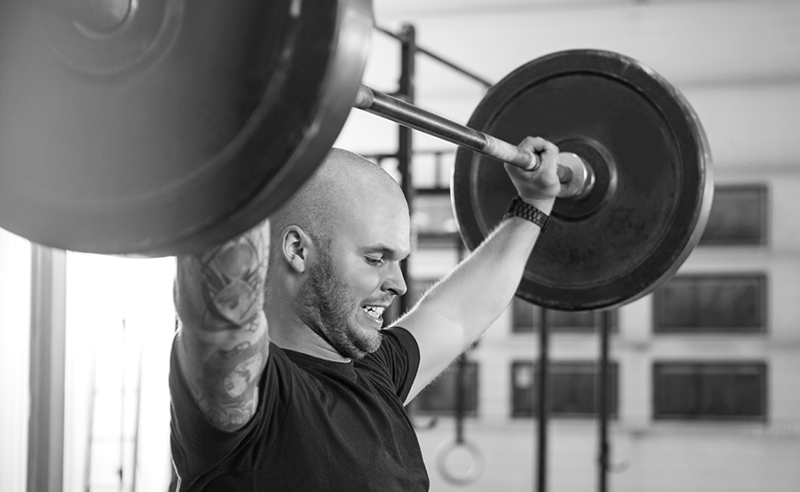
In the last 10 years (and really more so in the last 3 years), I have noticed an increasing trend in my practice. The number of people in their 30’s and 40’s who are coming into our facility with damaged shoulders (torn rotator cuffs, torn labrums, dislocated shoulders, etc.). All of these injuries were a result from lifting weights over their heads.
The ability to lift weights over our head requires a lot of things to work just the right way to keep the forces and stresses from overloading (i.e. damaging) our shoulders. This is why I say lifting weights overhead is a privilege and not a right.
You do not have the right to press or hold weights overhead just because you think you should be able to. You have to earn the right!
I want to share with you 3 easy tests you can do to see if you should be lifting weights overhead. It just may save you the agony that my patients face when they realize that they may have to spend hundreds or even thousands of dollars to fix their overhead lifting injury.
Should you be lifting weights overhead?
Take these 3 simple tests.
Test #1 – Arching over a foam roller
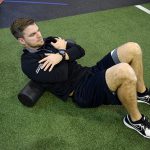
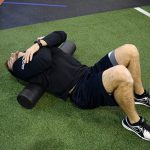
When we lift overhead, our upper back (thoracic spine) needs to be able to extend to allow our shoulder blades to optimally position themselves within the socket of our shoulder joints.
If the shoulder blade, and thus the socket, are not in the correct place more force is taken on through the rotator cuff, labrum and ligaments to keep the weight over our head. In this test, you should be able to arch over a standard 6″ foam roller and touch your head to the ground while your rear end stays on the ground.
Test #2 – Raising your arms without moving your lower back

Exercises like the snatch and the overhead squat require the torso to be completely straight so that the weight is balanced over a stable, vertical base. The arms must be able to raise without subsequent movement from the lower back. This test looks for exactly that. Stand with your back up against a wall and your feet about 12 inches away.
With your head, shoulders, low back, and butt against the wall, slowly raise your arms up straight overhead and touch your thumbs to the wall. If any part of you lower back comes off the wall as you raise your arms up, you didn’t pass the test.
Test #3 – Face to wall squats
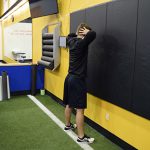
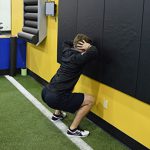
Test 3 builds on Test 2. In Test 2, we are looking to see if you can move your arms overhead without low back movement. In Test 3, we are looking to see if you can squat down vertically and without a forward lean.
With overhead squats and snatches, your arms know they have to be vertical. If you can not place your torso under them for that solid base then you end up over reaching backwards and injuries can happen.
This test looks to see if you can vertically squat. First, face a wall and place your feet 3-4 inches from the wall. Then, place your hands behind your head and perform a squat. You should be able to squat down without touching the wall or loosing balance.
“Remember, lifting weights overhead is extremely technical to do correctly, and that technicality is essential to keeping your shoulders healthy.”
Not everyone can or should be doing these lifts. Try these tests.
How did you score? Can you pass all three?
Written By: Travis Manners, President and Founder PT, SCS, CSCS



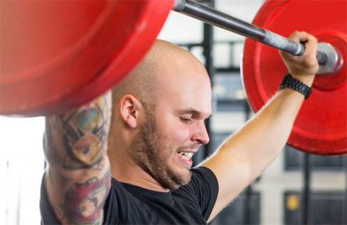

Ken Chouinard
February 6, 2019 at 8:06 pmAnd if we can’t pass all three what should we do to correct?
More information please.
Athletes' Training Center
February 6, 2019 at 8:18 pmGreat question! Really depends on which of the 3 tests you struggle with. If it is the first one, then doing more thoracic extension work on the foam roller can help. Basically turning the test into the exercise. If it is the 2nd test, that can be limited from a couple factors: inability to extend through your thoracic spine, poor range of motion of the shoulder joint itself, or weakness in your shoulder blade muscles. If it is the 3rd test, that limitation starts to factor in how mobile your hips, knees, and ankles are or are not. That test also incorporates your core strength and stability as well so those areas could be deficient. In my experience, the best place to start is getting your upper back (thoracic spine) more flexible and stretching your shoulders out thoroughly.
Kath Irahim
December 30, 2020 at 9:22 pmThis is very true! Will consider this moving forward 🙂
Steve
January 10, 2021 at 5:05 pmOverhead lifting most certainly is a privilege and not a right. I have to be very careful and do minimal volume and lighter weight when it comes to overhead lifts.
ajxs
July 5, 2022 at 6:41 pmAmazing write up! Thanks for this post